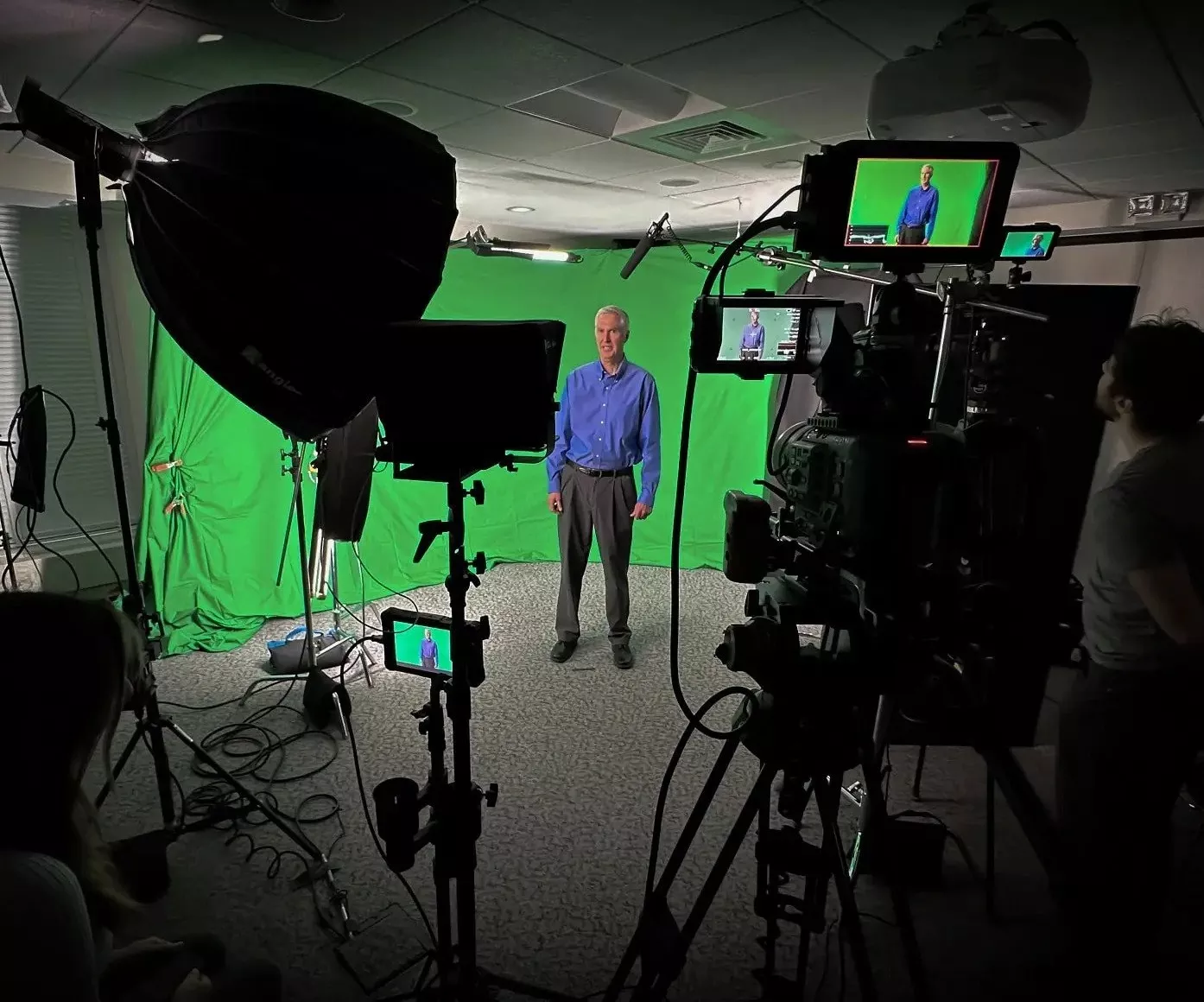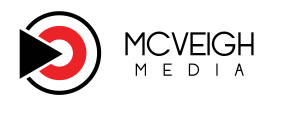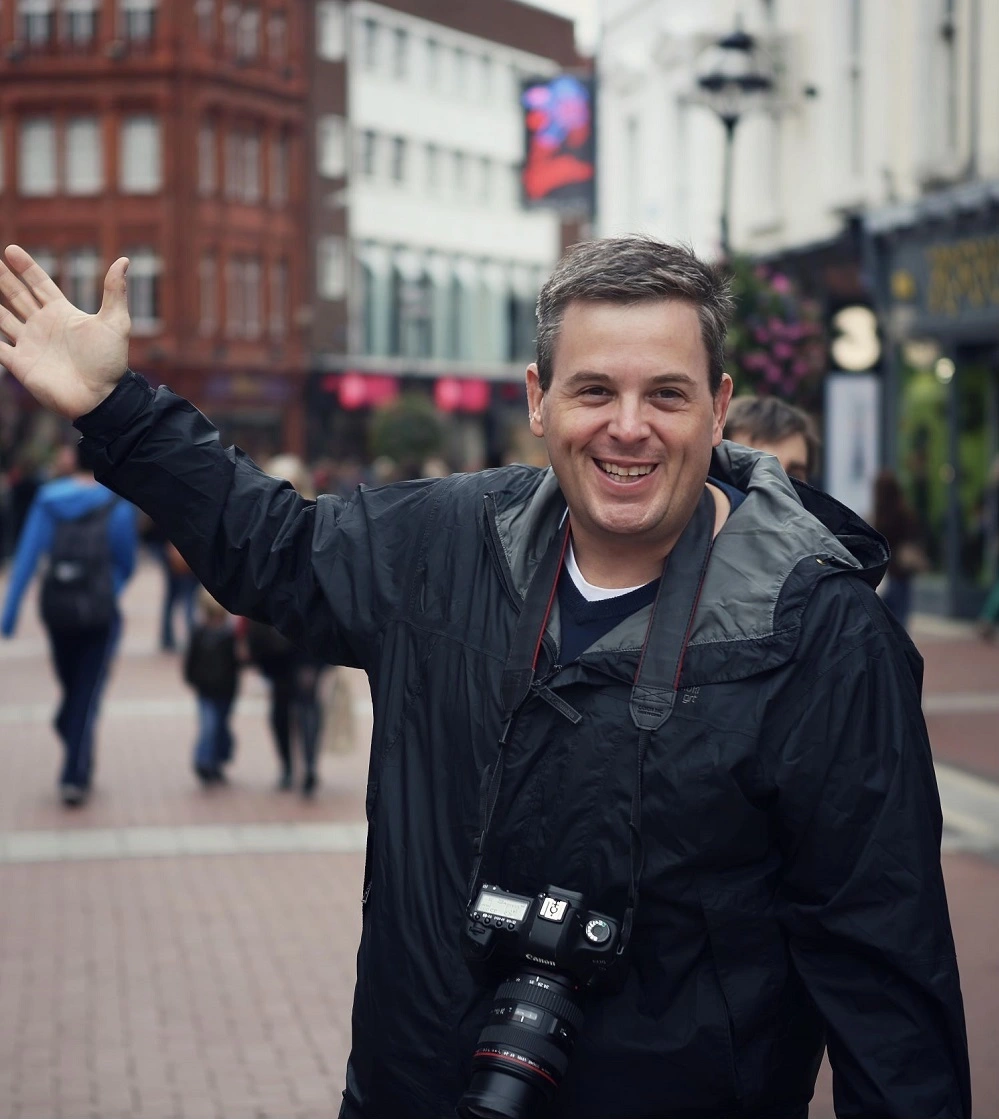 Making your camera debut can be equal parts exciting and nerve-wracking. You’re about to represent your company on camera as its face and voice, and you want to make a good first impression for your viewers. However, your favorite outfits may not translate to the camera in the way that you’d hope. Not to worry, though. You're in the right place if you need guidance on what to wear for a TV interview. Below, find tips and advice for looking your best on screen, courtesy of a Rhode Island videographer.
Making your camera debut can be equal parts exciting and nerve-wracking. You’re about to represent your company on camera as its face and voice, and you want to make a good first impression for your viewers. However, your favorite outfits may not translate to the camera in the way that you’d hope. Not to worry, though. You're in the right place if you need guidance on what to wear for a TV interview. Below, find tips and advice for looking your best on screen, courtesy of a Rhode Island videographer.
1. Choose Bright Colors
Color is one of the most important decisions when choosing what to wear on a TV interview. In our opinion, the best colors to wear on camera are jewel tones, like rich purples, blues, or emerald greens. They’re saturated without being overwhelming and work well with a variety of background colors. Plus, they look flattering with a variety of skin tones and can help brighten up your face. Just Keep in mind: You may want to take a rain-check on certain shades of green if you’re filming in front of a green screen.Additionally, we suggest opting for cooler shades, as more intense warm colors, like red and orange, tend to dominate the screen. But that’s up to your personal discretion and what you feel best suits your complexion.
2. Avoid Going Too Light
In general, lighter and brighter colors look more flattering on camera. But extra bright tones, like white or neon, tend to wash out on screen. Instead, consider opting for an off-white alternative, such as cream, light beige, or gray. Neutral tones, like brown, are also a classic low-risk color choice.While pastels can look flattering on some skin tones, they can also look washed out in certain lights, so wear them with caution.
3. Wear Black The Right Way
If you’re wondering what to wear on TV to look thinner, you may naturally be drawn to black for its slimming effect. However, black tends to absorb light, making details less visible to the camera. For that reason, we suggest leaving black and other dark shades for the lower half of the body, while reserving lighter colors for the torso. If you need to wear black near your face, try pairing it with a brighter-colored jacket, sweater, or scarf to bring in more light.4. Solid Colors
Patterns are a fantastic way to draw the eye in real life, but that isn’t always what you want on camera. Busy prints, like pinstripes or polka dots, can look blurry, or even create the illusion of movement. Additionally, bold patterns like paisley, houndstooth, and plaid, can be hard to make out or even make your viewers dizzy.For that reason, we suggest primarily choosing solid colors to form the base of your outfit. They draw the eye nicely and keep the focus on your face. But if you still want to wear a patterned piece, try opting for a more muted design and pairing it with a solid. For example, wearing a solid blazer over a patterned shirt.
5. Choose Simple Fabrics
Beyond the color choice, you’ll also want to consider the fabric. Shinier fabrics can create odd reflections under studio lights. On the other hand, matte fabrics tend to dampen shadows and create a more flattering silhouette. So, we suggest building the bulk of your outfit from fabrics of soft natural fibers, like cotton.6. Accessorize Wisely
A well-placed pop of jewelry can make a fantastic statement or contrasting piece on the screen, but we suggest using it sparingly, to avoid excessive reflections or distracting your viewers. Additionally, bracelets or earrings that “jangle” can make noise that affects your mic. So, the videographer may ask you to take them off before recording.7. Consider Your Branding
Business attire can help you look professional and confident in promotional content for a TV interview. Think well-pressed pants, shirts, blouses, and skirts. However, that will depend on your overall branding and the feeling you want to convey to your audience. If you’d prefer to signal that you’re causal and approachable, a simple matte T-shirt and jeans may get the message across better than business attire.8. Avoid Logos
Always avoid wearing a T-shirt with lettering or a logo, unless the logo belongs to your business or organization. After all, you don’t want to take the focus away from your business. You also want your viewers to focus on what you have to say – not trying to decipher the wording on your clothing.9. Bring Multiple Options To Your Video Or Photo Shoot
They say fortune favors the prepared. So, if you’re unsure about the best outfit choice or on the fence between different options, try bringing alternate clothing to your shoot. If you have time, you can ask your videographer to do a quick test shot to see how your wardrobe planning options compare. You also don’t need to worry if you happen to get coffee or ketchup on your shirt – you’ll have a backup ready to go.10. Just Do You
Finally, it’s important not to get overly wrapped up in dos and don’ts when choosing an outfit for your tv interview. Ultimately, you should wear an outfit that helps you feel relaxed, confident, and comfortable – even if it breaks a rule or two. So long as you’re content and representing your brand in the best light, that’s what’s most important.And, of course, if you need a Rhode Island videographer to bring your TV interview to life, McVeigh Media is ready to help you put your best foot forward. We can help you film commercials, online promotional videos, social media content, and more. We can even help you go the extra mile with editing and video marketing. Contact us today to learn more about how we can bring your next project to life.
Posted by Sean McVeigh
Sean McVeigh is an award-winning filmmaker and producer with over 25 years of experience. Sean’s work as a cinematographer and editor has been viewed on many of the major TV networks including NBC, ESPN, and the BBC. He has also worked with iconic brands like Apple, GE, Jaguar, Amtrak, US National Parks Services, and AAA.

